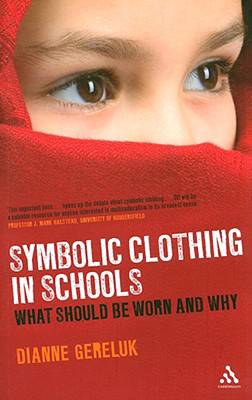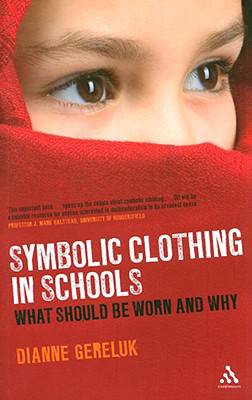
- Afhalen na 1 uur in een winkel met voorraad
- Gratis thuislevering in België vanaf € 30
- Ruim aanbod met 7 miljoen producten
- Afhalen na 1 uur in een winkel met voorraad
- Gratis thuislevering in België vanaf € 30
- Ruim aanbod met 7 miljoen producten
Zoeken
€ 76,45
+ 152 punten
Omschrijving
Dress codes and uniform policies have been enforced with great discrepancy in schools. A notable example is the banning of all 'ostentatious' religious symbols in public institutions in France.
Symbolic Clothing in Schools looks to the debate surrounding social, political and religious clothing in schools - any piece of dress that significantly forms a part of a person's identity, including headscarves, veils, t-shirt slogans and gang-identifiers. It will be of key interest to those caught up in the debate such as teachers, headteachers, students and policy makers, as well as anyone with a keen interest in how such clothing has been addressed in education policy and practice.
Dianne Gereluk looks to incidents in France, England, Canada and the United States, and provides principles that should assist in setting some general parameters that might be acceptable to all.
Symbolic Clothing in Schools looks to the debate surrounding social, political and religious clothing in schools - any piece of dress that significantly forms a part of a person's identity, including headscarves, veils, t-shirt slogans and gang-identifiers. It will be of key interest to those caught up in the debate such as teachers, headteachers, students and policy makers, as well as anyone with a keen interest in how such clothing has been addressed in education policy and practice.
Dianne Gereluk looks to incidents in France, England, Canada and the United States, and provides principles that should assist in setting some general parameters that might be acceptable to all.
Specificaties
Betrokkenen
- Auteur(s):
- Uitgeverij:
Inhoud
- Aantal bladzijden:
- 144
- Taal:
- Engels
Eigenschappen
- Productcode (EAN):
- 9780826497666
- Verschijningsdatum:
- 30/07/2008
- Uitvoering:
- Paperback
- Formaat:
- Trade paperback (VS)
- Afmetingen:
- 140 mm x 216 mm
- Gewicht:
- 208 g

Alleen bij Standaard Boekhandel
+ 152 punten op je klantenkaart van Standaard Boekhandel
Beoordelingen
We publiceren alleen reviews die voldoen aan de voorwaarden voor reviews. Bekijk onze voorwaarden voor reviews.








